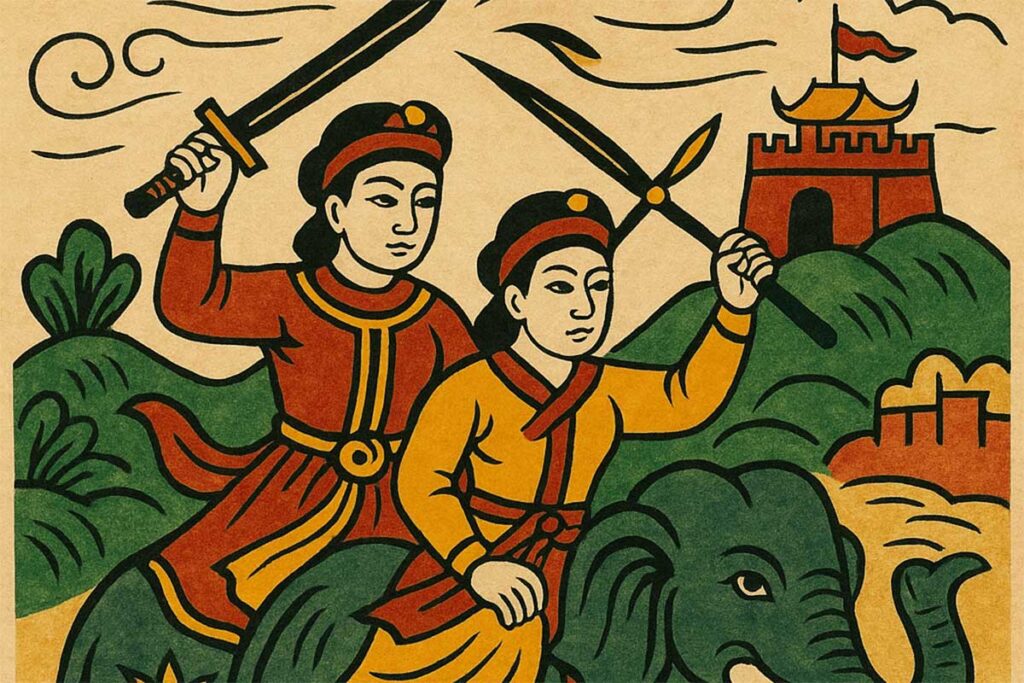Who were the Trung Sisters?
The Trung Sisters, Trung Trac and Trung Nhi, were born in the 1st century AD in what is now northern Vietnam. In 40 AD, they led a large-scale rebellion against the Chinese Han Dynasty, rallying support from local lords and communities. After their victory, Trung Trac declared herself queen and ruled an independent region for nearly three years before the rebellion was eventually suppressed.
The sisters are remembered as powerful symbols of Vietnamese pride, female leadership, and the fight for independence. Their legacy is honored in temples, festivals, and street names throughout the country, making them two of the most respected historical figures in Vietnam.
Life and Legacy – Key events in the Trung Sisters’ lives
Early life and family background (1st century AD)
The Trung Sisters were born into an aristocratic military family in Me Linh, an area near modern-day Hanoi. Their father was a local lord, and both sisters were raised with an education and martial training—unusual for women at the time. They grew up during a period of harsh Chinese occupation, with high taxes and growing resentment among the Vietnamese people.
Rebellion against Chinese rule (40 AD)
The rebellion began after Chinese officials executed Trung Trac’s husband, a fellow noble who had resisted imperial policies. Fueled by anger and injustice, the sisters led a widespread uprising, rallying support from regional leaders and common people alike. In a matter of months, they regained control of more than 60 fortresses across northern Vietnam, forcing Chinese forces to retreat.
Rule and Resistance (40–43 AD)
Following their military success, Trung Trac declared herself queen and ruled an independent Vietnamese territory. The sisters worked to rebuild the region and strengthen defenses, anticipating a Chinese counterattack. During their brief reign, women were appointed to high-ranking positions, reflecting their progressive leadership and the grassroots nature of the rebellion.
Defeat and Death (43 AD)
In 43 AD, the Han Dynasty sent a powerful army led by General Ma Yuan to crush the uprising. Despite fierce resistance, the Trung Sisters were eventually defeated. According to legend, rather than be captured, they chose to end their lives by leaping into a river. Their heroic story was passed down through generations and became part of Vietnam’s national identity.
Historical Impact and Mythology
Over time, the Trung Sisters became more than just historical figures—they became symbols of patriotism, resilience, and female courage. Their story blends fact and legend, and they continue to appear in Vietnamese literature, education, and public memory. Worshipped in temples and honored in festivals, they remain powerful icons in the cultural landscape of Vietnam.
Trung Sisters in Vietnam today
The legacy of the Trung Sisters lives on in Vietnam through statues, temples, street names, and national celebrations. Here’s where you can find them today.
Hai Ba Trung Temple, Hanoi (Dong Nhan Ward)
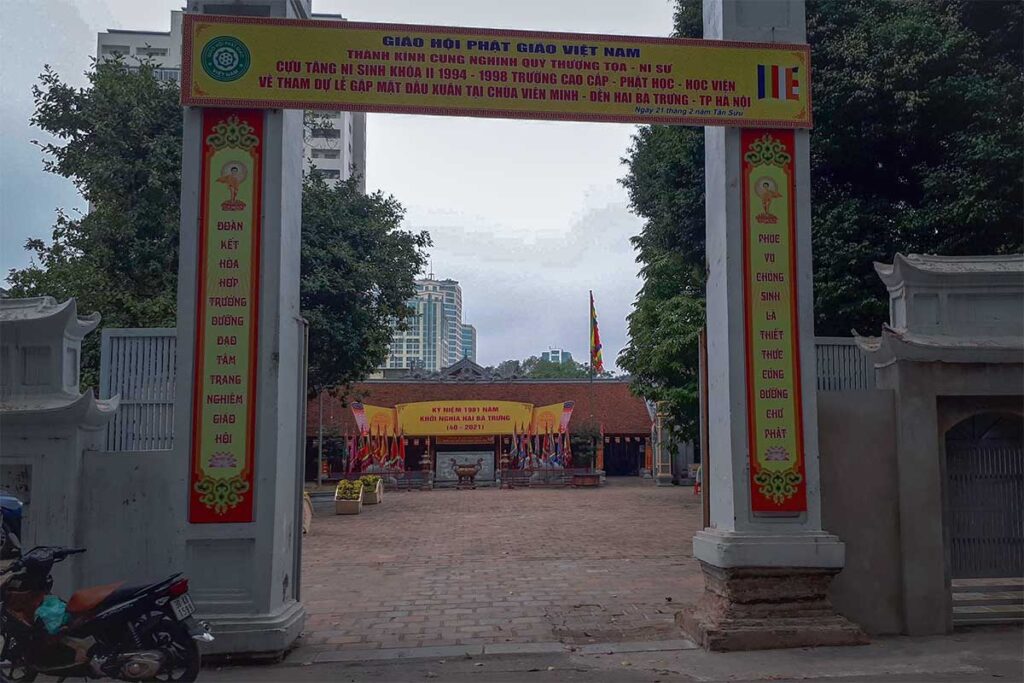
This Hai Ba Trung Temple is located in Dong Nhan Ward, within the Hai Ba Trung District of central Hanoi. It’s one of the capital’s most important spiritual sites and is fully dedicated to honoring the Trung Sisters. Inside, you’ll find ceremonial halls, altars, and bronze statues that depict the sisters as powerful national heroines. The temple becomes especially vibrant during the annual Hai Ba Trung Festival, when locals gather to pay tribute through offerings, performances, and traditional rituals.
Streets and Districts named after them
“Hai Ba Trung” (literally “Two Trung Ladies”) is a name you’ll see across Vietnam. In Hanoi, it’s the name of a central district, and many cities have streets bearing their name. Schools, markets, and public buildings also honor them, reflecting how deeply their story is woven into Vietnamese identity.
Hai Ba Trung Festival
Held annually in both Hanoi and Me Linh, this festival celebrates the sisters’ bravery and leadership. It includes ceremonial offerings, traditional performances, and local parades. The event is not just a memorial—it’s a living celebration of female empowerment and national pride.
Museum exhibits and public displays
While there is no dedicated museum for the Trung Sisters, they are prominently featured in several major museums in Hanoi. The Vietnam Women’s Museum includes detailed exhibits about their rebellion, with statues, artwork, and storytelling panels that highlight their role as national heroines.
The Vietnam National Museum of History also references their uprising in the broader context of early resistance against Chinese rule. You may also spot public murals, school displays, and educational posters honoring the sisters, especially around national holidays and women’s celebrations.
Statues and Memorials
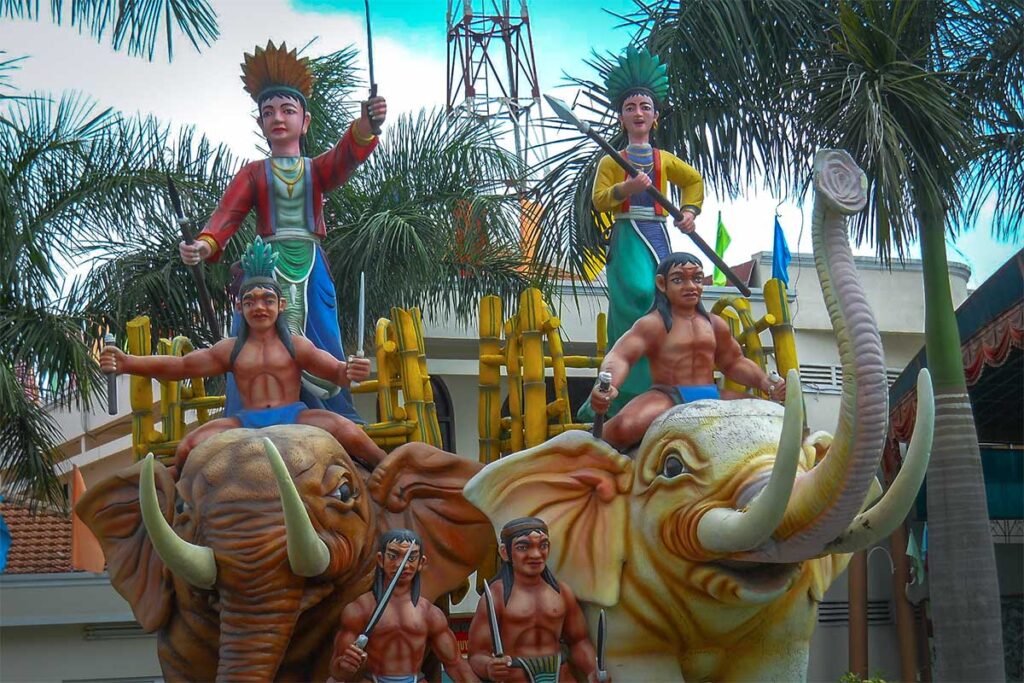
You can find statues of the Trung Sisters at both the Hanoi and Me Linh temples. Elsewhere in northern Vietnam, they appear in school courtyards and public squares, often depicted riding war elephants—a symbol of their bold leadership in battle. These statues are among the few in Vietnam honoring women in such heroic fashion.
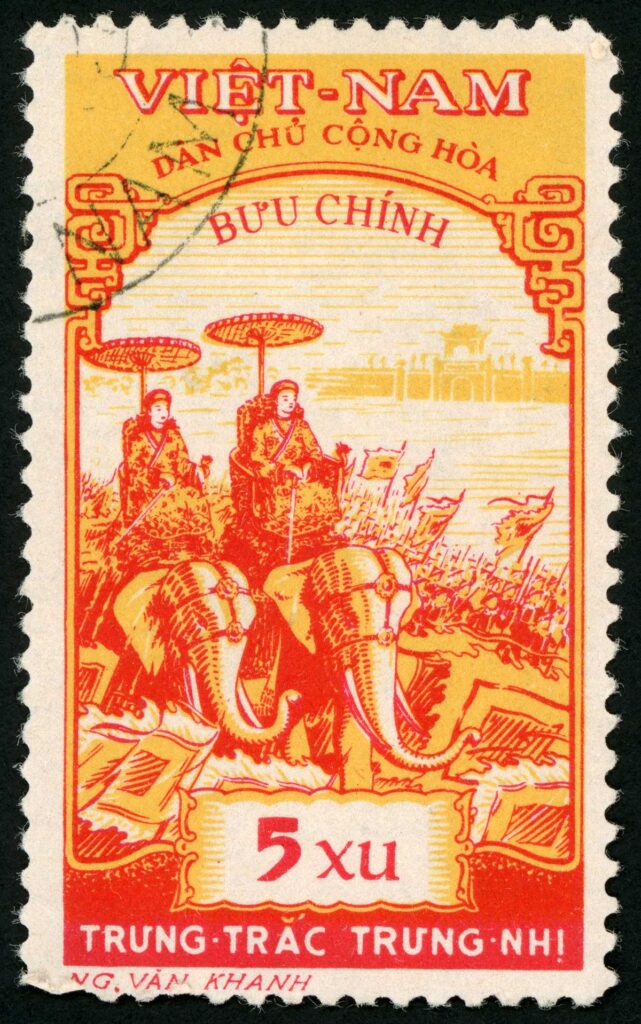
National education and identity
The story of the Trung Sisters is taught to every Vietnamese student and included in national textbooks, museums, and cultural exhibits. They are celebrated as early examples of resistance against foreign domination and as rare female military leaders in world history. For many, they represent not just the past, but enduring values of courage, leadership, and patriotism.
Other heroine statues
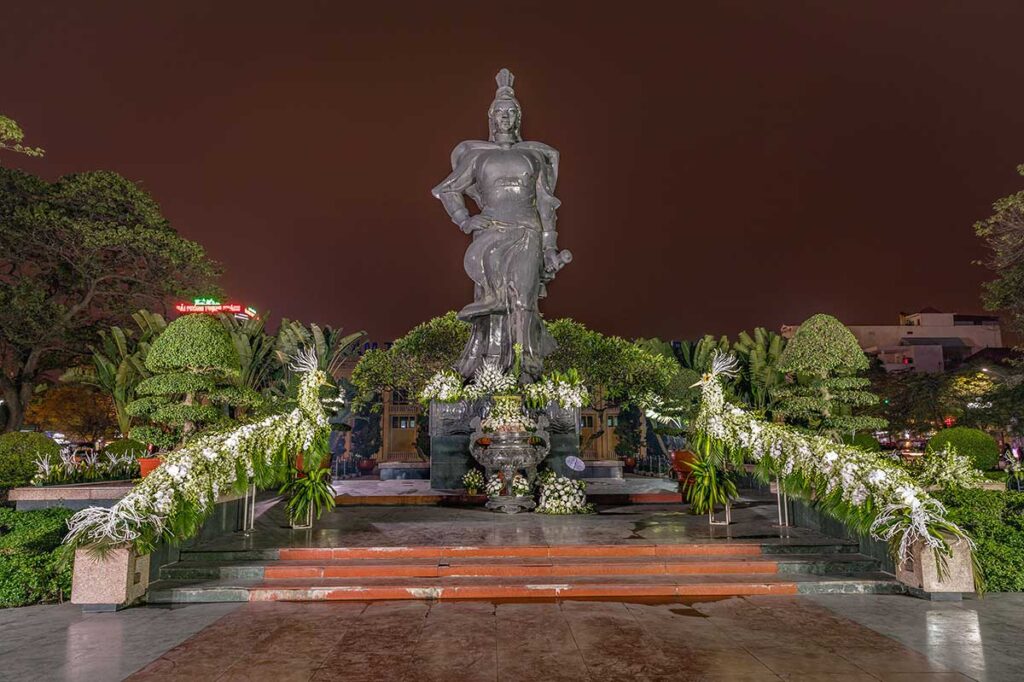
In central Hanoi’s park near Hoan Kiem Lake stands a notable statue of Le Chân, a female general who fought alongside the Trung Sisters during their rebellion in AD 40. While not one of the sisters, her public recognition highlights how Vietnam honors its early women leaders.
Other legendary figures in Vietnamese history
The Trung Sisters were early symbols of resistance, but they are part of a long tradition of heroic leadership in Vietnam. Here are more key figures worth knowing:
- Ngo Quyen – Led Vietnam to independence in 938 with a legendary victory over Chinese forces at the Battle of Bach Dang River.
- Ly Thai To – Moved the capital to Thang Long (Hanoi) and founded the Ly Dynasty, starting a new era of Vietnamese sovereignty.
- Tran Hung Dao – Famous for his successful defense against Mongol invasions in the 13th century, considered one of Vietnam’s greatest generals.
- Ho Chi Minh – Revolutionary leader who brought independence from French rule and unified the country during the 20th century.
- General Vo Nguyen Giap – Architect of Vietnam’s military victories in the modern era, including Dien Bien Phu and battles during the Vietnam War.
➤ Explore more in our full guide: Famous Vietnamese People
